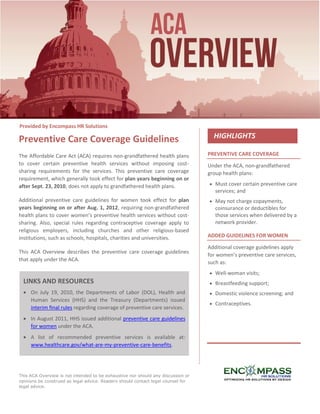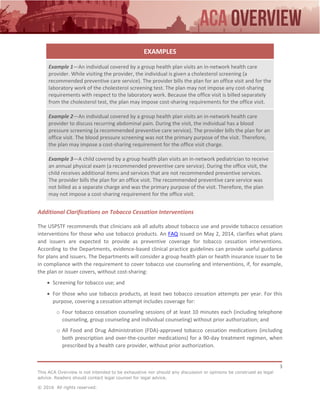The document outlines the preventive care coverage requirements under the Affordable Care Act (ACA), mandating non-grandfathered health plans to cover certain preventive services without cost-sharing, including specific guidelines for women's health services effective from 2012. It emphasizes coverage for various preventive services including routine screenings, immunizations, and tobacco cessation interventions, while indicating that grandfathered plans and out-of-network services may still incur costs. It also describes exemptions for religious employers regarding contraceptive services and outlines the temporary safe harbor and accommodations for nonprofit organizations that refuse to provide contraceptive coverage due to religious beliefs.







